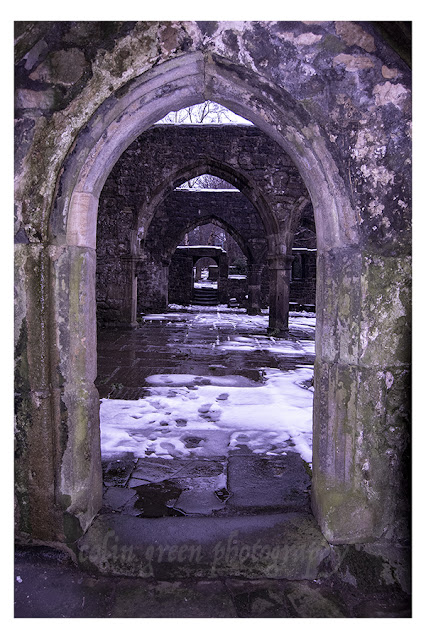There's something uniquely captivating about ancient ruins, especially when they stand sentinel amidst the everyday. Tucked away in the picturesque village of Heptonstall, nestled in the Upper Calder Valley, are the hauntingly beautiful remains of the original Heptonstall Parish Church, also known as the Church of St. Thomas à Becket, or at times, The Chapel of St Thomas the Martyr. I had the privilege of capturing these atmospheric scenes on a snowy day, November 19th, 2016, with my Nikon D3300.
The images transport you to a place where history whispers from every crumbling stone and frost-kissed archway. You can almost feel the chill wind that must have swept through its open spaces for centuries.
Originally constructed sometime in the late 12th to early 13th Century, this venerable church was a vital hub, serving the communities of Heptonstall, Erringden, Langfield, Stansfield, and Wadsworth. Its priests, appointed and funded by the Vicar of Halifax, ministered to the people living west of Halifax, a testament to its significant role in the spiritual life of the region.
The church's long history wasn't without its dramatic moments. Around the turn of the 16th Century, it was even closed for a period due to the murder of a priest, reportedly after he performed an illicit marriage ceremony – a tale that adds a layer of intriguing mystery to its past. Over the centuries, the church saw numerous renovations and additions, undergoing significant changes in the 14th, 15th, 16th, and 17th centuries. In 1810, a new clock was installed, a detail that now connects it to its successor.
However, fate had a different plan for this ancient structure. In 1847, a devastating storm swept through, tearing off the roof, damaging the tower, and causing considerable havoc in the churchyard. The "church rate," a tax intended to support the parish church, simply wasn't enough to cover the extensive repairs needed.
Rather than restoring the damaged church, the community rallied together through voluntary subscriptions and built a brand new church right in the same churchyard, which officially opened its doors in 1854. This new church stands proudly beside its older, ruined counterpart, a poignant reminder of continuity and change.
Today, the ruins of the Church of St. Thomas à Becket remain, a majestic and poignant landmark. Walking through its snow-dusted nave, beneath its skeletal arches, is a truly evocative experience. It’s remarkable to think that occasionally, outdoor services are still held within these ancient walls, bringing new life to a place steeped in so much history.
These photographs capture the raw beauty and quiet dignity of the ruins, particularly striking against the winter snow. The interplay of light and shadow, the starkness of the stone against the white landscape, and the enduring strength of the remaining structure all tell a story of centuries past.
If you ever find yourself in Heptonstall, I highly recommend a visit to these incredible ruins. They are a powerful testament to time, resilience, and the enduring spirit of community.
Clicking any of the images below should open a link in another window to my Colin Green Photography store on Zazzle.































































